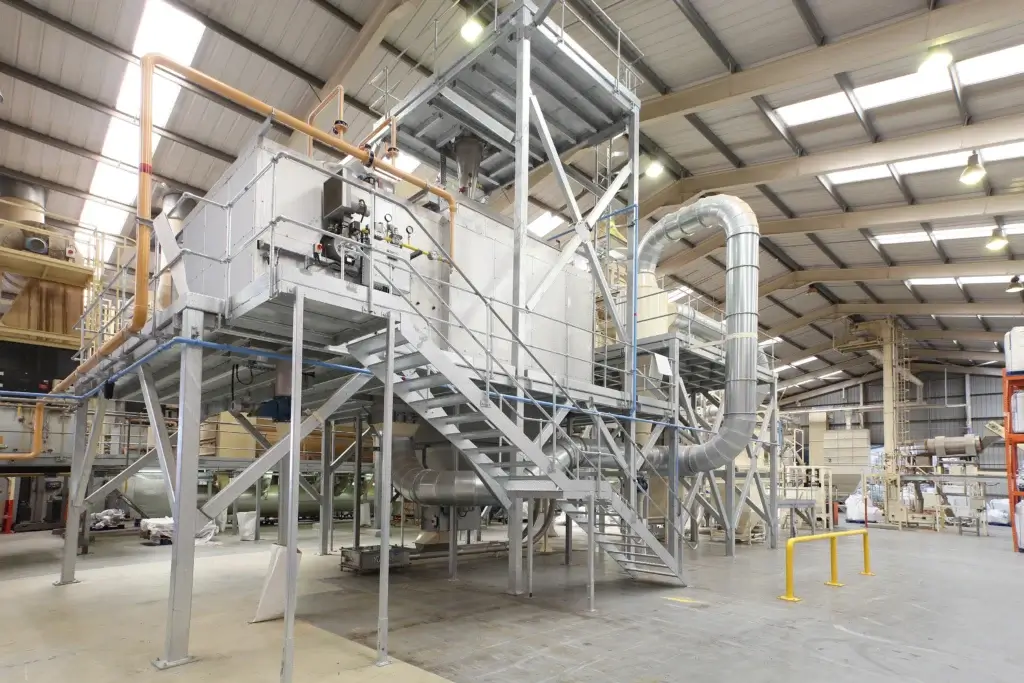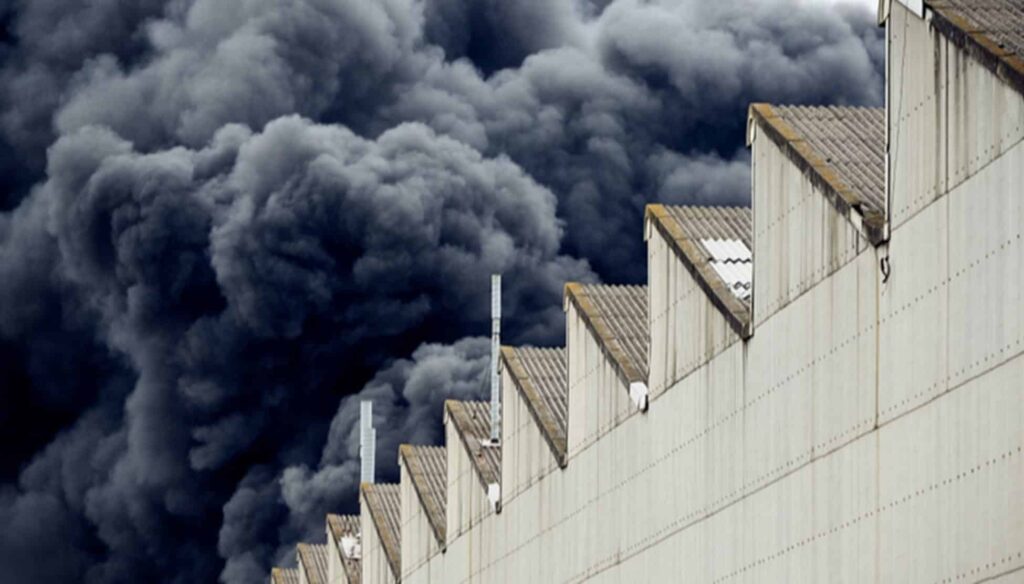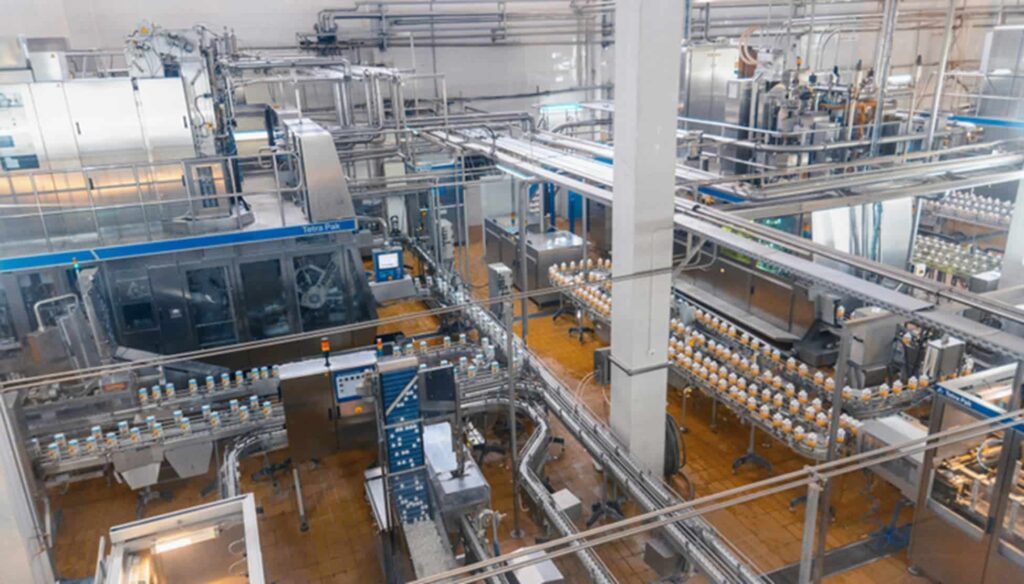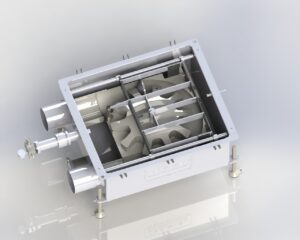The looming threat of combustible dust poses a significant challenge to industrial safety. But, how do dust explosions in the process industry occur? Let’s explore this topic and delve into innovative conveyor solutions that play an essential role in fortifying the process industry against these catastrophic events.
How Do Dust Explosions in the Process Industry Occur?
Dust explosions in the process industry occur when five key elements converge – combustible particles, oxygen, enclosed spaces, an ignition source, and a specific concentration of combustible dust. The combination of these factors leads to a chain reaction, resulting in a potentially catastrophic event. Understanding and addressing these elements is crucial for implementing effective preventive measures, like choosing reliable conveyor systems manufacturers and ensuring industrial safety.
Unfortunately, combustible dust explosions have recently caused catastrophic damages and loss of life in process industries across America. According to the Chemical Safety Investigation Board, there have been 111 explosion incidents in industrial plants between 2006 and 2017, causing 66 fatalities, while 337 workers suffered severe injuries.
The CSB report stated that almost a quarter, 24% to be precise, of these devastating explosions affected the food industry. However, an array of other industries handling combustible material, like coal mining, wood processing, pharmaceutical components manufacturing, petrochemical, and paper process facilities, are exposed to dangerous explosion risks.

Historical Catalyst – The Imperial Sugar Tragedy and its Impact on Dust Explosion Safety Standards
By recognizing the importance of assessing and controlling these combustible hazards, safety experts will be able to implement adequate dust explosion prevention and mitigation measures. In 2007, a devastating sugar explosion in the Imperial Sugar refinery in Georgia caused irreparable damage, leaving 14 fatalities and 36 injured employees behind. After conducting a thorough investigation, the CSB concluded that this severe explosion was “entirely preventable.”
After this severe safety incident, the US Chemical Safety Board incited the Occupational Safety and Health Agency to join forces with the National Fire Protection Agency and devise a series of combustible standards. Companies need to comply with these standards and ensure the prevention and mitigation of explosions in the process industry.
Professor Eckof, the author of The Dust Explosions in the Process Industry, emphasizes in the 3rd edition of this invaluable resource, “It is imperative that practical and theoretical knowledge of the origin, development, prevention, and mitigation of dust explosions is imparted to the responsible safety manager.” For this reason, this article will focus on the factors that lead to the ignition of dust clouds and the explosion escalation within a process plant. Furthermore, it will offer practical solutions for the prevention and mitigation of explosions.
What Is a Combustible Dust Explosion, and How Does it Develop?
This potentially disastrous safety hazard occurs when airborne dust particles accumulate and undergo rapid combustion, generating a high-pressure airwave. This being said, there are five essential factors that must align for an explosion to take place:
- Combustible dust particles that serve as fuel,
- Oxygen in the air that boosts flame propagation,
- Enclosed space because initial explosions usually start inside confined equipment parts,
- An ignition source or anything containing something hot enough to cause an ignition,
- The specific concentration of combustible dust particles.
In addition to these factors, the dispersion levels of dust play a crucial role in deciding the likelihood and intensity of an explosion. Specifically, an explosion is improbable when the concentration of dust is insufficient to sustain it.
Conversely, excessively high concentrations of combustible dust can impede oxygen availability, hindering the potential for an explosion. Fine particles within these parcels pose a greater danger due to their ease of dispersion and larger surface area, rendering them highly flammable.

Escalation Dynamics – Understanding the Hazardous Domino Effect of Secondary Dust Explosions
Let’s explain what the Dust Explosion Pentagon is. It’s a formation of a concentration of easily spread combustible dust mixed with oxygen near an ignition source inside enclosed equipment. This formation leads to a primary explosion, either within the processing equipment or an area with a substantial concentration of accumulated “fugitive” dust. The resulting initial explosion generates a shock wave that suspends accumulated dust in the air and may inflict damage on ducts, vessels, or dust collectors, triggering a subsequent wave of secondary explosions.
The Menace of Secondary Dust Explosions and Particle Size Dynamics
These subsequent explosions occur shortly after the initial ones and pose a greater threat, resulting in severe damage and loss of life. To illustrate, the initial explosion at the Sugar Imperial refinery originated in the central building. However, 15 subsequent secondary explosions caused it to extend to three adjacent silos, leading to their complete destruction.
This incident underscores the immense destructive potential of secondary explosions. Moreover, it highlights that particle size plays a crucial role in the rapid propagation of flames during a dust explosion. A study by the NFPA revealed that even a dust accumulation as thick as an average paper clip can be enough to trigger explosions.
Combustible Dust Risk Assessment for Lowering Potential Risks
Before you implement safety management practices and guidelines provided by OSHA and NFPA to prevent explosions from happening, identify and reduce existing combustible dust risks. You will achieve this by taking the following steps.
- Identifying problem areas,
- Detecting combustible dust types,
- Eliminating dust hazards.
The risk of a potential dust explosion is elevated in process industry facilities where powdered materials easily escape processing and industrial conveyor systems, settling on adjacent horizontal surfaces. Dust accumulation occurs on equipment surfaces, stairs, railings, and light fixtures. Although visible surfaces undergo regular cleaning, explosive dust may amass significantly on overlooked hidden surfaces. Therefore, routine housekeeping and cleaning of both exposed and concealed areas within the facility are imperative for minimizing hazards.
A crucial second aspect involves identifying whether dust is hazardous. While cleaning an automated conveyor system and other equipment for safety purposes, it is essential to concentrate on identifying types of combustible dust that could potentially lead to severe explosions.
Mitigating Explosion Risks through Combustible Material Inspection and Source Elimination
Several NFPA publications may provide valuable information on combustible materials. Apart from implementing effective cleaning methods, inspect the dust sources to eliminate the generation of explosive dust. You can also check the primary sources of ignition to eliminate explosion risks.
Hence, it is essential to assess process stages and equipment, seal openings to prevent the buildup of fugitive dust, and minimize diverse ignition sources such as sparks or heat. The NFPA offers a comprehensive set of codes, standards, and guidelines aimed at easing this critical process and supporting safety consultants in the process industry to address the challenges posed by explosion risks.

Explore the Dust Explosions Prevention Practices
We have already stated that dangerous explosions happen when the so-called Dust Explosion Pentagon is formed. By removing one of these crucial elements, you will prevent these safety incidents from happening. You can do this by implementing the following measures:
- Combustible dust removal,
- Combustible dust concentration reduction,
- Oxygen level reduction,
- Ignition sources detection and control,
- Storing combustible dust outside the processing facility is an inherently safer approach that will prevent explosions within facilities.
Choose the Reliable Automated Conveyor Systems and Prevent Potential Hazards
Tubular drag cable conveyors are the perfect solution for tackling the issue of fugitive dust. Unlike the more traditional conveyor belt systems, a tubular conveyor transfers various materials through different process stages in completely sealed tubes. They use circular disks attached to a cable to push the material through the tube. Cablevey Conveyors offer completely enclosed conveyor engineering systems that will prevent dust particles from escaping the equipment.
You can reduce the level of oxygen in the atmosphere by injecting an inert gas, like nitrogen, into an enclosed system. This will prevent the initial explosion. Through the identification, regulation, and prevention of ignition sources, you can effectively remove the ignition element from the Dust Explosion Pentagon, mitigating the risk of safety incidents.
A lone spark, when drawn into a dust collector, can serve as an ignition source. Indications of this explosion hazard include heat, radiation, and smoke. Upon detection, activate control measures such as an abort gate to prevent the entry of the ignition source into the processing line. Additionally, suppression systems can be employed to swiftly extinguish the ignition source, preventing the initiation of a flash fire or primary dust explosion.
Dust Explosion Protection – A Focus on Preventive and Protective Measures in Conveyor Manufacturing
The distinction between preventive and protective measures lies in their application timing – protective measures are employed once an explosion has been initiated. Initially, efforts can focus on enhancing confinement to reduce the impact of a dust explosion. Additionally, explosion vents can be utilized. Many traditional venting systems open at a predetermined pressure level during an explosion, releasing pressure into the surrounding area.
It’s crucial to consider the location when implementing these conventional venting systems, avoiding directing them toward areas with personnel and keeping them away from walls that may hinder pressure release. Flameless venting, akin to eliminating the confinement process, involves the application of mass to extinguish the flame, preventing it from escaping through the vent panel. That’s why flameless venting simultaneously suppresses and redirects the flame.

Cablevey Conveyors Is Manufacturing Conveyor Systems Towards Safer Processes
Dust explosions in process industries have unfortunately become frequent and expensive safety incidents. In response, OSHA and NFPA have made significant strides in creating safety management policies to prevent these incidents and safeguard individuals and facilities. A fundamental initial stride in mitigating the impact of explosions lies in gaining a comprehensive understanding of their occurrence.This knowledge is particularly vital for professionals involved in conveyor manufacturing, emphasizing the importance of expertise in conveyor installation supervision for bolstering overall safety measures. Cablevey Conveyors, with its advanced automatic conveyor system, stands out as a crucial component in enhancing safety protocols. Contact us at Cablevey Conveyors and check out how we can elevate your safety standards. Take a step towards a secure future with our innovative solutions.






